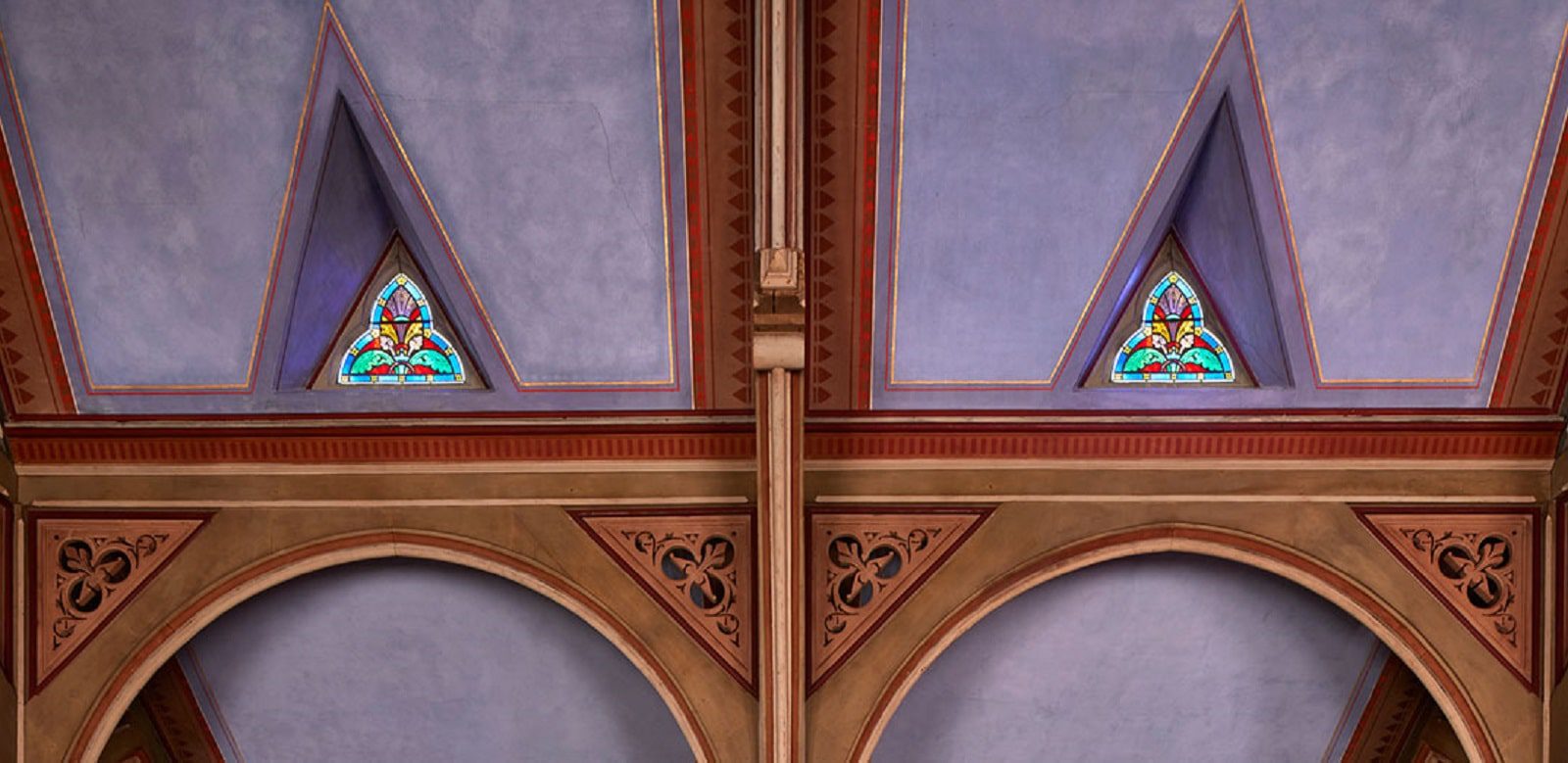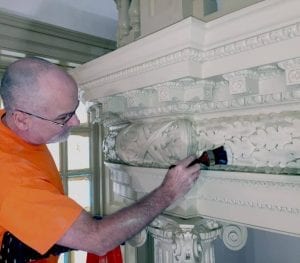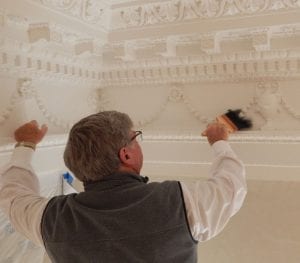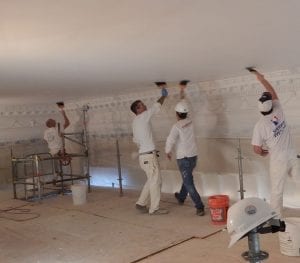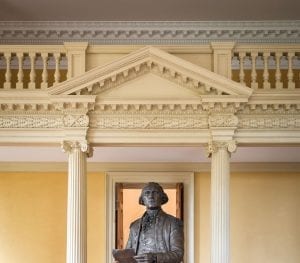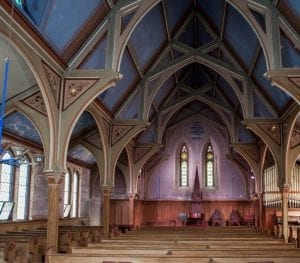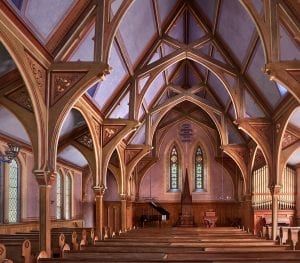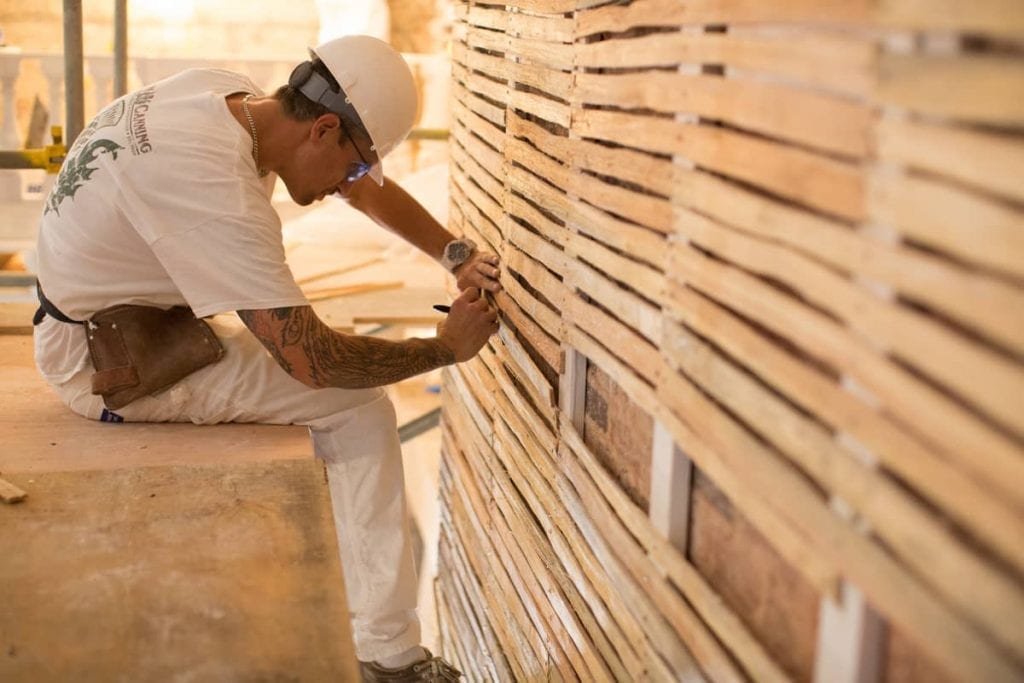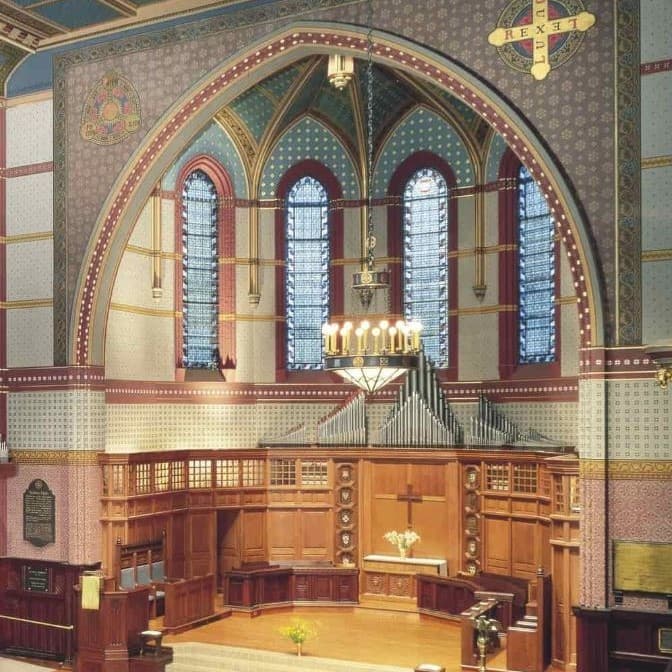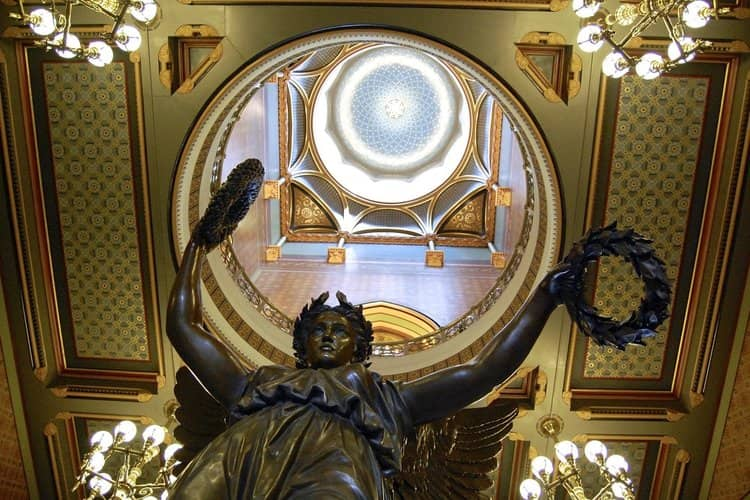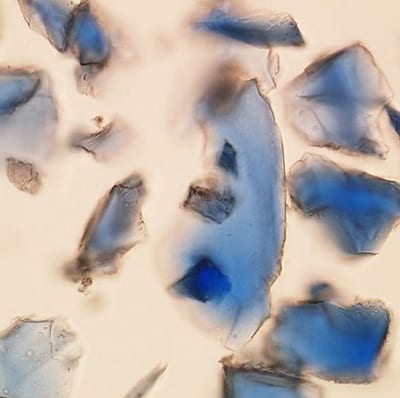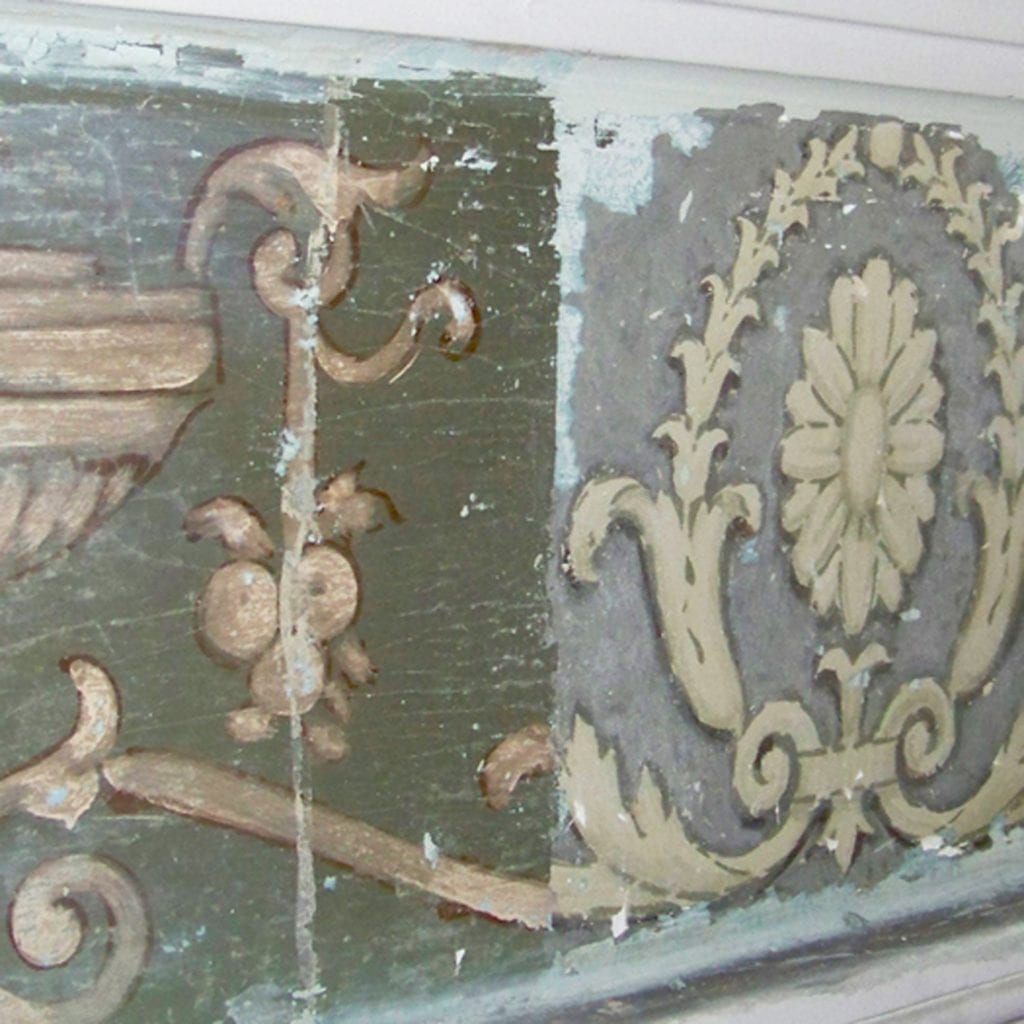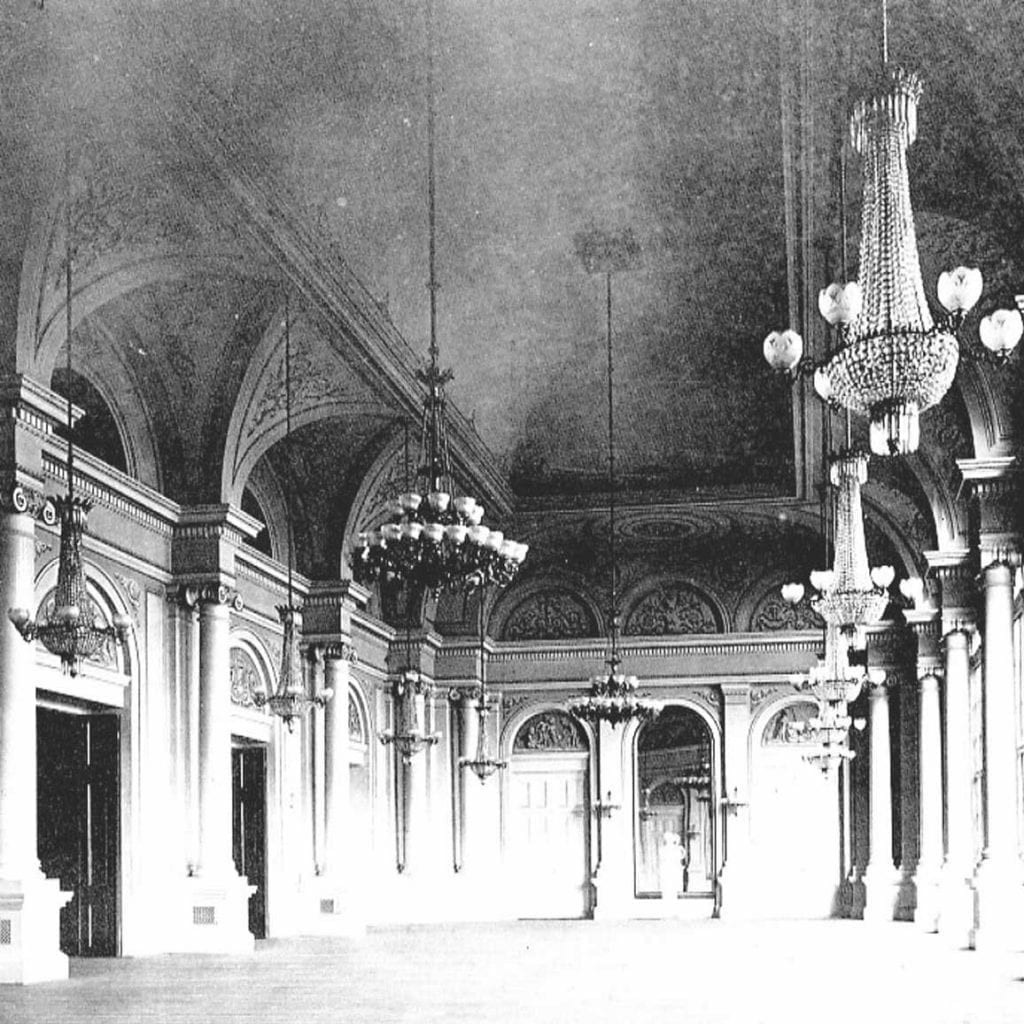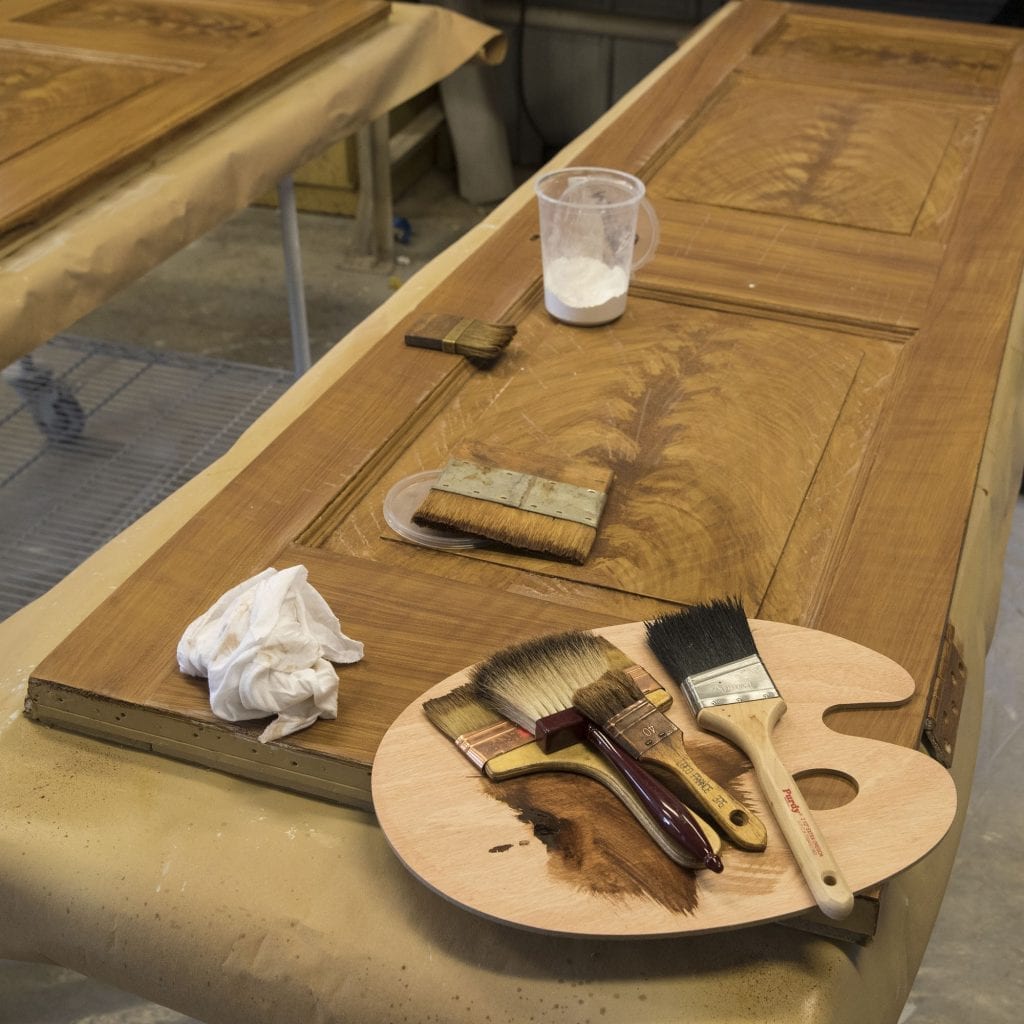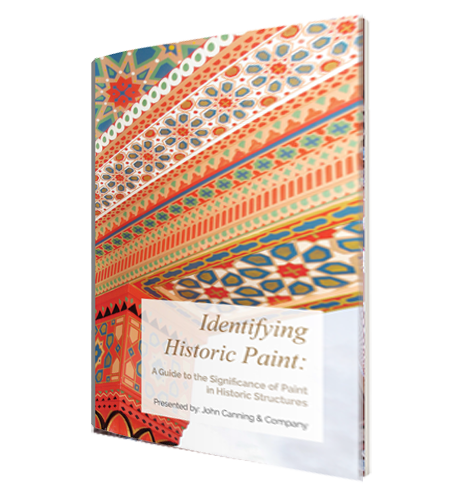We are all familiar with the most common paint manufacturers today: Sherwin Williams, Benjamin Moore, Valspar, Behr. The commercials are cute and inspirational, and the paints themselves can be impressive, adhering to any surface imaginable and capable of standing up to creatively-inclined children who draw on walls.
These modern paints all stem back to innovation after the second World War. The idea of modernizing paint began with the introduction of alkyd resins, titanium pigments, emulsions, and latex paints. Around this time, paints were developed to be used by anyone—rather than by the craftsman who had a thorough understanding of the constituents of the paint being used.
However, when working in a historic structure, there are several reasons why it’s important to understand the type of paint that was originally used. These include:
- Historic Accuracy: Restoring historic interiors is about more than simply selecting the right color. It’s also important to match the sheen, mode of application, and intended finish. Identifying the type of paint that was originally used will help provide a better understanding of what the original intent the architect or designer had when considering the space.
- Toxicity: Before the advent of titanium white, lead was considered the most important white pigment, and was in almost every paint. This can lead to obvious health concerns in both the inhabitants of a space and those working to restore the work, if care is not taken. Identifying the year or general time frame that the finish was manufactured and applied will likely determine if your finish is lead-containing, and can inform how best to address it during the restoration or renovation project.
- Renovations: Delaminating, flaking, crazing, and craquelure, are all terms that refer to failing paint. Before applying a new finish, it’s important to identify what paint was originally used in order to prevent failing paint in the future. Learn what will be compatible for your project in advance, rather than worry about mitigating the failure down the road.
Identifying Types of Historic Paint
Before paint became modernized and marketed to the everyday consumer, the types of paint could be categorized under two types: Oil-bound paints and waterborne paints. The constituents of the paint is what sets these two categories apart.
1. Oil-Bound Paint
Oil-bound paints consist, essentially, of four main components:
- Pigment: A solid portion of the paint which creates the color and opacity. It also contributes to the durability of the finish.
- Binder: The binder is the oil that carries the pigment, and can be considered a “filmmaker.” Linseed is a commonly-used oil, as are hide glue and gelatin.
- Thinner: The binder firmly adheres the pigment to the surface in a cohesive film. Turpentine is an example of a thinner commonly found in historic paints.
- Dryer: The dryers accelerate the normal drying time of the oil and the thinner converts the paint to a suitable material.
Before today’s thixotropic—or self-leveling—paints were manufactured, oil bound paints were applied by brush and stippled while wet. The stippling would have provided an even sheen and uniform film.
Oil paints were used because of their durability, strength, and sheen. Because of the hardness of the oil as it dries, oil paints tend to become brittle over time and may display signs of cracking.
At the Maryland Old Senate Chamber, traditional distemper paint was used at the plaster surfaces such as the ceiling, walls, and entablature, while linseed oil paint was used at the wood surfaces.
2. Waterborne Paints
Waterborne paints consist of three main components, each of which perform the same role as they do in oil-bound paints:
- Pigment
- Binder
- Thinner
For waterborne paints, unlike oil based paints, a dryer was not necessary because of the evaporation process. In the case of waterborne paints, rather than use a dryer, a retarder is prevent rapid evaporation of the medium.
The type of binder used in waterborne paints included, but wasn’t limited to: Animal skin or bone glue (commercial distemper), egg (tempera), beer (often used for woodgraining and marbleizing), and milk (casein or milk paint).
Waterborne paints were most often used on interior plaster surfaces such as walls and ceiling. Because they harden through evaporation, they are most identified through the binder, or lack thereof.
Over time, as the paint ages, the binder weakens and the paint would not hold up to abrasions. This is especially important when considering applying a finish on top of a waterborne paint.
The distemper paint had at Yarmouth New Church had sustained sever water damage. The paint was conserved and consolidated, and reinstated where lost.
Understanding Historic Paint
While today a painting project is made simple with a visit to the paint store, historic paints were frequently hand-mixed by the craftsman. Made with what was available, ratios and recipes may have been altered for each individual project.
Referencing historical documents, specifications, or drawings may provide insight about the recipes used for a particular interior. A historic finishes investigation can identify variations of paint type, color, sheen, glazes, or other finishes that may have once existed.
In any preservation project, there is only one shot to get it right. Armed with knowledge, a proper interpretation of an interior will prevent future frustrations and lead to a successful preservation project.

